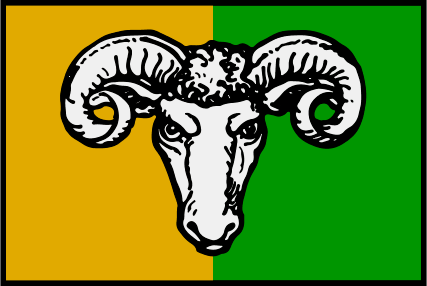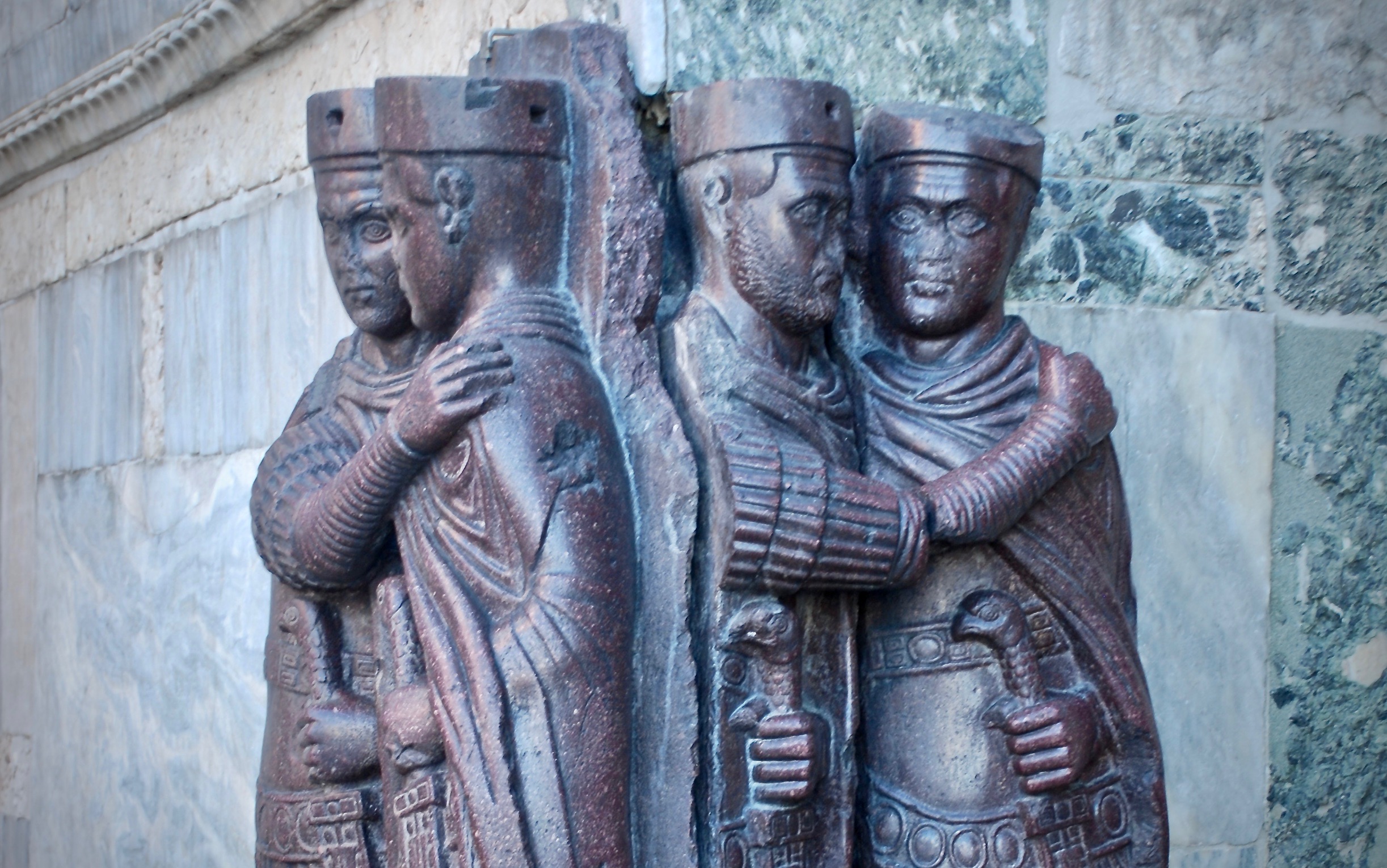Dukedom of Eisenbrook
Located deep within the Felsspitze Mountains, the Dukedom of Eisenbrook claims all of the area of the Kreis Plateau, at the very end of the Tafelland Valley. The Dukedom is a rugged place to dwell and carve out a living, and its people are as hardy as the mountains that surround them, and they need to be to survive the long harsh winters that rip through the central Felsspitze Mountains. Since the collapse of the Kingdom of Reinhart and the emergence of the Mountain Principalities to replace it, Eisenbrook has been all but cut off from the wider world, as all of its trade in, or out of the Dukedom has to travel through the neighbouring nations further down the Tafelland Valley. Both the Barony of Hohensten and the Earldom of Fürstenkreis have attempted to gain concessions from Eisenbrook by squeezing the trade that they allow to pass up the valley, but the people of Eisenbrook have always been isolationist in bent, have become adept at surviving on the seemingly inhospitable area of the Kreis Plateau, and are ferocious when it comes to defending their land.
Structure
Out of all of the areas that once made up the Kingdom of Reinhart, the Dukedom of Eisenbrook is the one that retains the most vestiges of its tribal past from the Nomadic Era. Rather than being ruled by a hereditary noble family or pseudo-monarch, Eisenbrook is ruled by a Duke or Duchess that is selected through a trial by combat. When the current Duke or Duchess dies, or decides to step down an invitation is extended to all adults in the Dukedom to meet at the Ducal Field, a large clearing, bordered by standing stones just within the borders of the Hoherwald, on a specified date where a mêlée is held, where all those who put themselves forward fight for the Ducal title and position.
The rules of the mêlée do not stipulate that all of the other contestants have to be removed or forced to retire from the Ducal Field, which means that in most competitions intricate alliances will have been formed by the participants, where other combatants agree to help one particular combatant up to a certain point, with the expectation that they will then voluntarily retire from the Ducal Field in exchange for either money, land or a key position at court. It is also allowed in the rules for people to be represented by a combatant that fights on their behalf, theoretically allowing anyone, regardless of age, frailty, physical fitness or combat ability to take the title. In the days of the Kingdom of Reinhart, the kings and queens of the Kingdom made a habit of sending a royal champion to represent their chosen candidate, in an attempt to guarantee that their preferred candidate would get the title, though this did not always work out the way they desired.
Once the title has been claimed, the new Duke or Duchess has powers equivalent to and tends to act like an autocratic monarch, and will appoint Elders (a curtesy title only that does not actually equate to the incumbents age) who help to run the Dukedom and have responsibility for certain areas of government, such as defence etc. However, it is possible for anyone in the Dukedom to directly challenge the Duke or Duchess, by challenging them to one-on-one combat on the Ducal Field. In these situations the challenger and Duke/Duchess, or their elected champions fight until one is killed or forced to retire, and no-one is allowed to intervene in the contest. If the Duke/Duchess or their representative win, the challenger has to either go into exile outside of the Dukedom, or face execution for bringing the name of the ruler into disrepute. If the challenger wins, the Duke/Duchess must either step down from their position immediately, which would trigger another general invitation to take the title, in which they can participate, or they must come to an agreement that is acceptable to the challenger to resolve their grievance, or they themselves must themselves go into exile.
Even though the official title of the leader of Eisenbrook is Duke or Duchess, the continued tribal mind-set of Eisenbrookers means that the Duke or Duchess is still regularly referred to as the ‘Chief’ or ‘Chieftain’
Assets
The heart of Eisenbrook’s economy is pastoral agriculture, based around the animals that can survive, and even thrive on the tough grasses and heathers of the Kreis Plateau. A large amount of activity focuses on the herding and rearing of sheep, goats, yaks and aurochs, which provide wool and other textile materials, milk, meat and horns that are used in the production of craft items. In addition, Eisenbrooker Mountaineers bring in extra income for the region by engaging in trapping activity, alongside their military role, which not only involves hunting game animals, such as deer, but also capturing large, exotic and often dangerous animals that are then sold into captivity for a good price in other parts of Turoza.
Theoretically there are other natural resources that could be exploited more on the Kreis Plateau. For instance, there are known pockets of metal ore deposits in the mountains that surround the Kreis Plateau, but these are exploited very minimally by the Eisenbrookers, who only have a limited mining programme for the extraction of iron for the production of weapons and tools. The Dukedom is not particularly interested in increasing this provision it would seem, primarily as it would have political ramifications by bringing them into more conflict with their immediate neighbours the Barony of Hohensten, who have a large mining operation at Ormur in their territory, that is heavily geared towards export.
In addition, the Dukedom could exploit the potential lumber reserves of the Hoherwald forest in the centre of the Kreis Plateau, but the forest’s rather miraculous survival in an area where few trees should be able to grow, and the fact that the people of Eisenbrook treat the forest with a strong mix of respect and superstition means that only dead wood is collected from the forest’s boundary, lest its inhabitants grow too aggressive.
Demography and Population
On the whole, the demographic of the Dukedom of Eisenbrook are a lot more egalitarian than those of many other states. This is because the limited resources available on the Kreis Plateau, and the focus on pastoral agriculture mean that the gap between those considered to be rich, and those considered to be poor is much smaller than in other nation states. In addition, the political system of Eisenbrook means that there has never been a permanent Ducal family to act as a sink for the majority of the Dukedom’s wealth, allowing the wealth to remain more distributed amongst the populace at large.
From a societal point of view, the fact that there are not many easily available building materials in Eisenbrook has also added to the more egalitarian nature of the Dukedom. As supplies of wood aare at a premium, it is very expensive, which means that rather than having their own individual homes, families will group together and pool their resources to build a single longhouse, that can house them all, and that is cheaper overall to build and maintain than each having their own dwellings. Indeed many, so-called, villages in Eisenbrook are actually composed of a single longhouse, that houses all of the community under one roof. Having many families living under the same roof, regardless of what their trades, or supposed social standing are, means that there is little space for hierarchical snobbishness to deeply root itself.
In terms of the racial composition of the populace, the majority of Eisenbrook’s people are Humans, Half-Orcs and Goliaths, all races that lean onto the hardier side, and are able to adapt more easily to the kind of lifestyle that the Kreis Plateau demands. Orcs and Lupines are also sighted fairly regularly in the Dukedom, though they do not consider themselves to be part of Eisenbrook’s populace, nor are they considered part of the populace by the other residents of the Dukedom, but instead belong to the mountain tribes who regularly descend onto the Kreis Plateau in search of food and plunder.
In addition, the Dukedom has an embedded population of Elves who live in the Hoherwald, whose community there is thought to pre-date the settlement of the Kreis Plateau by the tribe that was assimilated into the Dukedom under the rule of the Kingdom of Reinhart. These Elves predominantly do not interact with the rest of the Dukedom’s population beyond the borders of the Hoherwald, but they do participate in key national events, such as feasts etc., and have even been known to put up their own champions for the mêlée in the Ducal Field. The Elves of the Hoherwald are known to protect the rest of the Dukedom from the significant presence of Fey creatures that live amongst the trees, and from whatever other creatures are drawn to whatever is the source of the magic in the centre of the Hoherwald, that allows it to thrive and grow in a place where no trees naturally belong.
Military
Eisenbrook’s position in the Felsspitze Mountains, surrounded on all sides by mountains that harbour all kinds of fell creatures, bandits and marauders, with the exception of the exit from the Kreis Plateau down into the Tafelland Valley, where relationships with their nearest neighbour the Barony of Hohensten are always strained, means that Eisenbrook maintains a much larger and more professional military force, comparative to the size of their civilian population than many other Mountain Principality nations do. The Dukedom maintains a standing military force of c.6,000 personnel, which on paper is a staggering number, considering that this equates to nearly a third of the population, around half of whom act as a traditional army, and garrison the towns, villages and border forts.. However, the other half of Eisenbrook’s military carry out duties that are not wholly focused around martial activities.
For example, Eisenbrook maintains a large standing force of cavalry, one of the few of the Mountain Principalities, other than the Barony of Bolunburg to do so. This cavalry force not only serves the military function of acting as a rapidly moving, far ranging strike force, but also act as the shepherds and guardians of the large herds and flocks of animals that are key to the economy of the Dukedom during peacetime. Equally another large component of Eisenbrook’s military are the Mountaineers, who monitor and keep tabs on the numerous mountain passages and valleys that come down onto the Kreis Plateau, to ensure that they are not being used by brigands or raiders as a base of operations. In addition, a core component of the Mountaineers duties is to hunt game, to be brought back and sold in nearby towns and villages to supplement people’s diets.

Type
Geopolitical, Duchy
Demonym
Eisenbrookers
Government System
Monarchy, Elective
Economic System
Market economy
Official State Religion
Parent Organization
Controlled Territories
Neighboring Nations




Comments